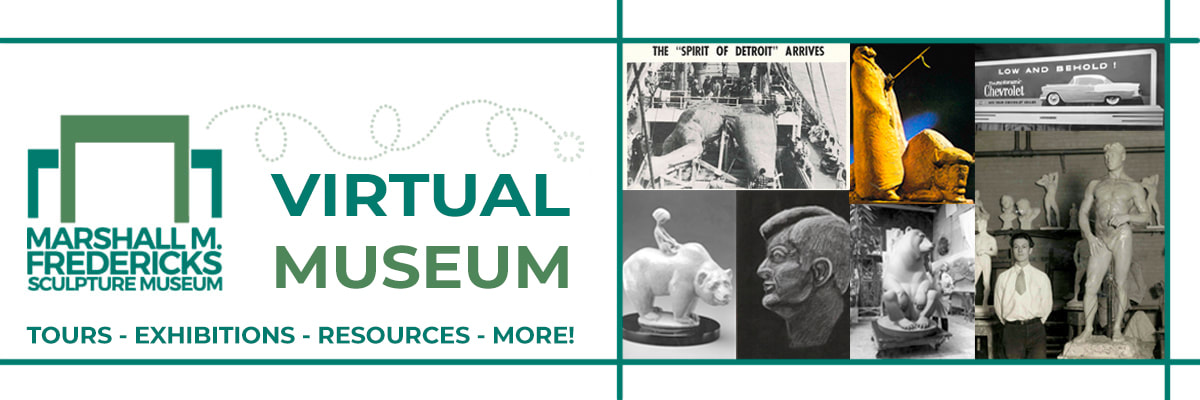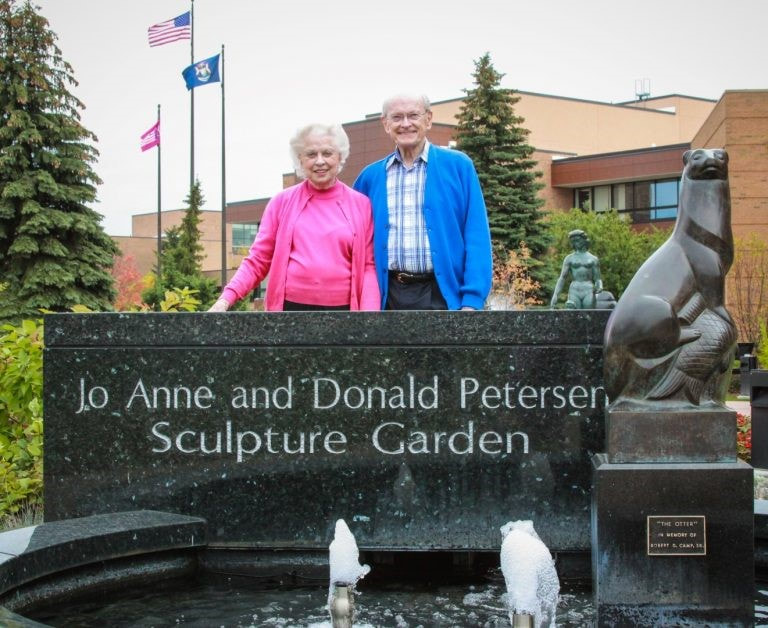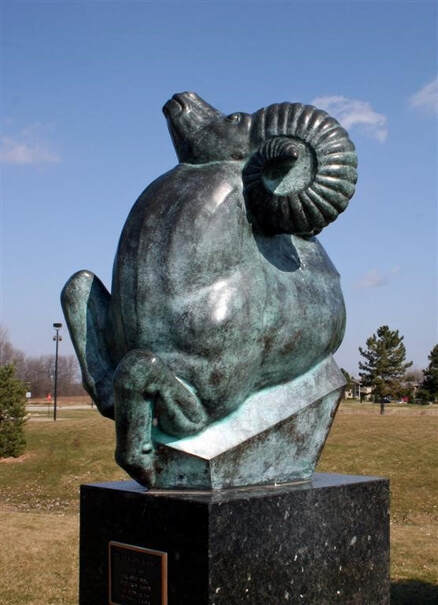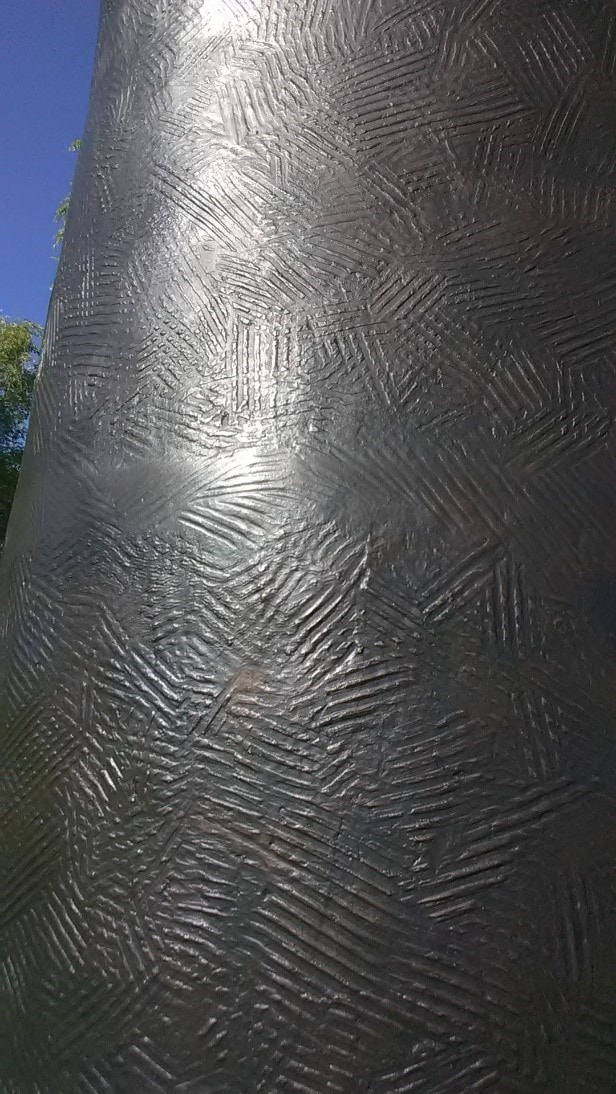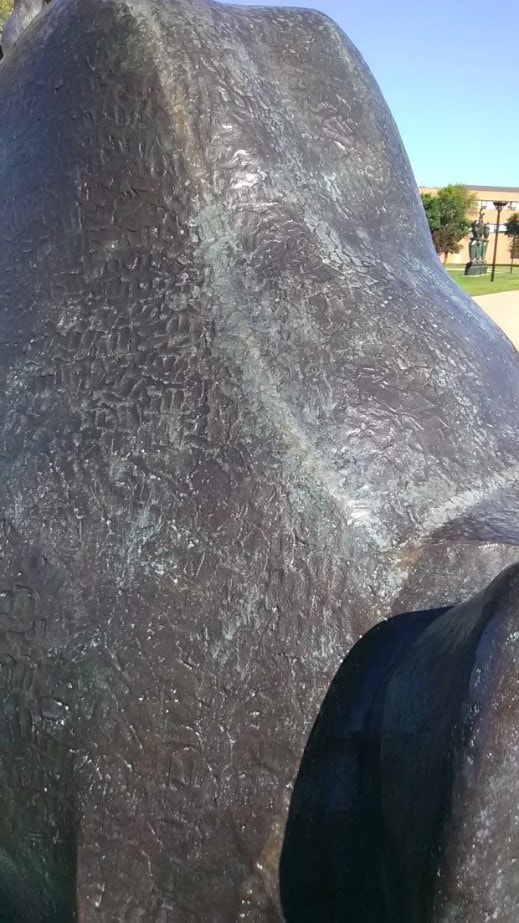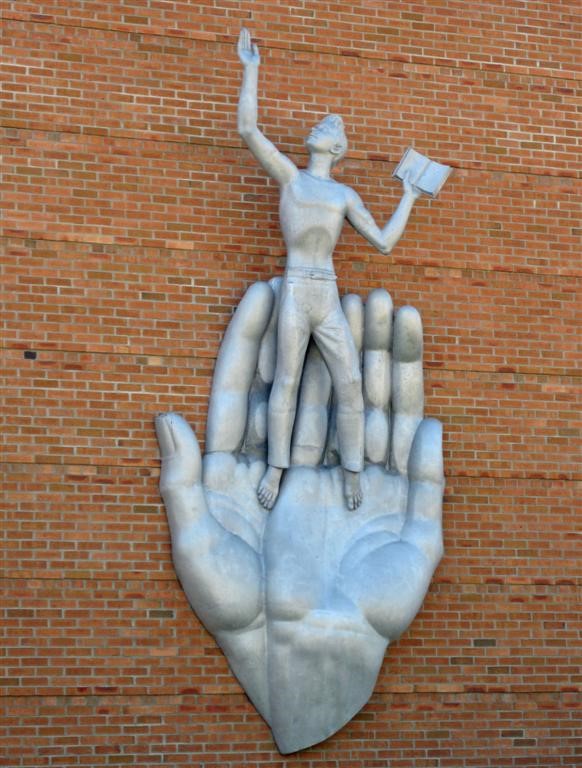S.T.E.A.M. SEEK AND LEARN IN THE SCULPTURE GARDEN: THE SCIENCE OF METAL CASTING
Do you know what a sculpture garden is?
It is a very pretty place where you find plants of all types like trees, bushes and flowers nicely designed with sculptures. There are also some benches all over the garden for you to sit and enjoy the outside, plants and sculptures. Our garden is called the Jo Anne and Donald Petersen Sculpture Garden. The Petersen’s wanted all visitors to have a beautiful place to visit and enjoy the garden and sculptures. They were friends with Marshall and own one of his Flying Wild Geese sculptures.
It is a very pretty place where you find plants of all types like trees, bushes and flowers nicely designed with sculptures. There are also some benches all over the garden for you to sit and enjoy the outside, plants and sculptures. Our garden is called the Jo Anne and Donald Petersen Sculpture Garden. The Petersen’s wanted all visitors to have a beautiful place to visit and enjoy the garden and sculptures. They were friends with Marshall and own one of his Flying Wild Geese sculptures.
As we walk through the garden we’ll learn about science and sculpture making process.
Jo Anne and Donald Petersen Sculpture Garden Map
You can see a map of where all our outside sculptures are located and pictures of them. Click here to view our sculpture garden brochure: https://www.marshallfredericks.net/uploads/1/2/6/6/126697254/sculpture_garden_map.pdf
Look at our map to see where all the sculptures are located. How many sculptures can you count? If you said 21 and 3 in other campus locations, you are correct.
Let’s walk through the garden. Look at your map to see the floor plan. Walk around to see some of the sculptures in the garden. They are all by Marshall Fredericks.
The Science of Casting Metal
All of the sculptures in the garden area either on the building or in the garden are all cast metal. To make one, they were sculpted using an oil-based clay, then a plaster mold was made in sections, then a plaster sculpture that looks exactly like the clay sculpture was made from the molds, then a grain sand mold was made from the plaster sculpture and that mold was used to make a metal cast. Sounds wordy and confusing, well sit on a bench and get comfortable. Click on the link below and let’s watch a 7-minute video on the metal casting process of Marshall’s sculpture: The Making of The Poet—Lord Byron
CLICK here to see video! http://marshallfredericks.org/learn/videos/
After viewing the video, can you answer some questions?
Do you remember the name of the metal that was used to make the sculpture in the video? If you said bronze you are correct. It is the same metal for all the sculptures in the garden except for one. What two metals make bronze? If you said copper (85%) and tin (15%) you are correct.
Walk over to one sculpture and gently knock on it. Can you tell if it is hollow or solid? If you said hollow you are correct. Why would they be hollow? If you said to save on the amount of metal used and the metal cost, you are right. Bronze costs about 2 to 3 dollars a pound. If you use less metal, it would be less cost and lighter. Bronze is a very dense metal and even a small sculpture of 2 feet in-the-round would be about one hundred pounds. You can image how heavy these sculptures in the garden weigh.
Some sculptures have different colors like brown and green, but they are still bronze. The color you see is a patina that you learned about at the end of the video.
Sculptures are cast in sections as you saw in the video. The sections are all welded together like a 3-D puzzle. Can you see the weld marks/paths on the sculpture of Boy and Bear to the right? The weld mark is usually a different color (lighter in this case) and appears as a line. Then, the metal is cold worked. Textures need to be blended with additional cold work or chasing to match the existing surface texture. See how the texture is match by coldwork/chasing on the Black Elk sculpture below.
The one sculpture that is a different metal is silver in color. Can you find this sculpture? If you said Youth in the Hands of God, you are correct. Do you know what this metal might be called? If you said aluminum, you are correct. See the photograph of it below.
If you want to learn more about metal casting and the mathematical process of enlarging a sculpture with a pantograph or “point-up” machine, view our brochure at: https://www.marshallfredericks.net/uploads/1/2/6/6/126697254/studio_brochure_for_phones.pdf
Don’t forget to Participate in the GLBR STEM OST Passport Program:
Please remember in order to participate in the Passport program, log five (5) STEM experiences across the Great Lakes Bay Region to win a prize from the MiSTEM Network (while supplies last). Access this site for more information at: https://docs.google.com/forms/d/e/1FAIpQLSfESy_jW-RNWG8KGQ_20ev6e6_HXVqgjtdH1hqnj17CY7x-MQ/viewform
To be eligible, you will need to visit and/or attend five (5) different STEM destinations or programs and take photos of your child participating in STEM activities. Please send the pictures to [email protected]
Also, feel free to post them on social media and tag us at Twitter: @stemgreatlakes or Facebook: @stempipeline.
For the Museum Facebook post at @marshallfredericksmuseum, and Instagram #marshallfredericksmuseum
You can e-mail all five experiences at one time or send them after each visit. All experiences must be completed by June 30, 2021 to be eligible for a prize.
For more information, please visit: https:/ /www.stempipeline.com/out-of-school-time/
Find more Marshall Fredericks Sculpture Museum virtual activities and resources at: marshallfredericks.org
Did you know our garden is a Pokemon location. Check it out!
Don’t forget to Participate in the GLBR STEM OST Passport Program:
Please remember in order to participate in the Passport program, log five (5) STEM experiences across the Great Lakes Bay Region to win a prize from the MiSTEM Network (while supplies last). Access this site for more information at: https://docs.google.com/forms/d/e/1FAIpQLSfESy_jW-RNWG8KGQ_20ev6e6_HXVqgjtdH1hqnj17CY7x-MQ/viewform
To be eligible, you will need to visit and/or attend five (5) different STEM destinations or programs and take photos of your child participating in STEM activities. Please send the pictures to [email protected]
Also, feel free to post them on social media and tag us at Twitter: @stemgreatlakes or Facebook: @stempipeline.
For the Museum Facebook post at @marshallfredericksmuseum, and Instagram #marshallfredericksmuseum
You can e-mail all five experiences at one time or send them after each visit. All experiences must be completed by June 30, 2021 to be eligible for a prize.
For more information, please visit: https:/ /www.stempipeline.com/out-of-school-time/
Find more Marshall Fredericks Sculpture Museum virtual activities and resources at: marshallfredericks.org
Did you know our garden is a Pokemon location. Check it out!

